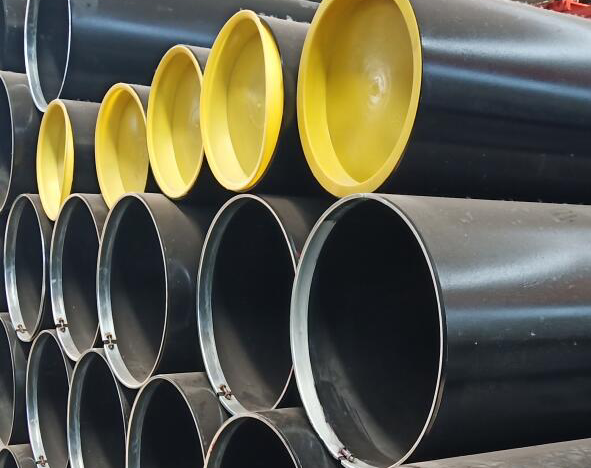In the production of
high-frequency resistance welded (ERW) pipes, internal weld surface treatment is usually carried out in two ways: incomplete scraping (weld reinforcement) and complete scraping (scraping will form the inner surface of the groove), and the results are not ideal, will affect the overall performance of the steel pipe. Taking into account the thickness of ERW pipe welds, the strength and reliability of ultrasonic testing, extrusion of thicker welds - calibration processing, optimization of contour welds to improve the overall performance of ERW pipes.
After the ERW steel pipe is welded, the excess metal is extruded from the welding area, forming burrs (commonly called burrs) on both the inner and outer surfaces of the pipe. A scraper is usually used to remove the inner and outer burrs. In actual production, better quality products usually scratch the outer burrs, but the scratching problem inside the burrs is more likely to leave high or scratched gaps on some inner surfaces of the burrs. If the burrs in the weld are not handled properly, the overall quality of the steel pipe will be affected.

Under normal circumstances, there are two methods for scraping ERW pipe welds, namely incomplete scraping and complete scraping.
Incomplete scraping method, retaining a certain degree of internal burrs (the height of burrs allowed by some specifications is no more than 0.8mm). This method does not damage the base material of the blade and does not significantly reduce the structural strength of the weld. However, this method will cause reflections at the edges due to residual burrs formed on the base material during subsequent ultrasonic testing of the weld. . Ultrasonic flaw detectors are used to test the reliability of cause interference, resulting in a higher false alarm rate.
The complete scraping method thoroughly cleans the internal burrs, making the transition between the base material and the weld very smooth, thus eliminating the residual influence of burrs in subsequent ultrasonic flaw detection. However, this method often fails to produce sufficient stability during scraping due to system failures at work, such as the presence of vibration, which causes local scratches on the scraped weld, causing damage to the base metal and wall deformation of the welded part. Thin, structural strength.
Tips: ASTM A53 covers seamless and welded steel pipe with nominal wall thickness. The surface condition is usually black and hot-dipped
galvanized. ASTM A53 is produced mainly for pressure and mechanical applications, and is also used for transport of steam, water, gas line pipes.


